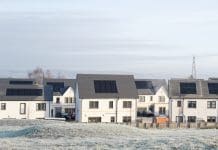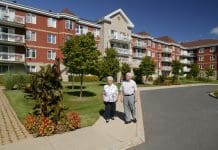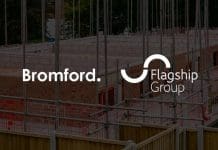National House-Building Council (NHBC) sheds light on the new research guidance on MVHR, and the new standard to improve future installations.
According to analysis, the move towards higher levels of energy efficiency in new homes and improved air tightness has led to around a quarter of new homes built being fitted with Mechanical Ventilation with Heat Recovery (MVHR) systems.
The changes to building regulations have introduced a practical and regulatory need to ensure that the indoor air quality and ventilation provision in new homes are appropriate, as well as designing the home in such a way that reduces the amount of energy used for space heating. MVHR systems work by providing fresh air ventilation, while at the same time recovering heat from exhaust air that would have otherwise been lost.
With most people in developed countries spending an estimated 80% of the time indoors, good indoor air quality is vital for the comfort, health and wellbeing of occupants. Poor indoor air quality can be connected to a wide range of serious health effects, including allergic and asthma symptoms, lung cancer, chronic obstructive pulmonary disease and cardiovascular disease.
An increasing number of house-builders are using MVHR as a practical and cost effective way of meeting ventilation and energy efficiency requirements. It appears likely that the trend to install MVHR will continue, and could well become the dominant form of ventilation for new homes.
Designed and installed correctly, MVHR can offer a number of benefits. But there is a growing body of evidence, based on academic study and practical observations that indicate MVHR systems are all too often designed, installed or commissioned in such a way that the design performance is greatly reduced.
Research from the NHBC Foundation in 2009, The ‘Indoor Air Quality In Highly Energy Efficient New Homes’ review, followed by the publication this year of the Zero Carbon hub-led VIAQ Task Group report ‘Mechanical Ventilation with Heat Recovery in New Homes’, both revealed a number of issues with MVHR systems.
However, with only limited evidence available that is based on monitoring the use of MVHR in practice, the NHBC Foundation has recently published additional primary research that studies ten homes in Slough, built to level 6 of the Code for Sustainable Homes. As well as examining the design, commissioning, and installation of the systems, over the course of the 18-month monitoring, the occupants were also interviewed on three occasions to provide in-use feedback.
The earlier VIAQ Task Group final report did identify that when done correctly, MVHR systems can deliver good performance, but it is clear from this new research assessment of MVHR systems and air quality in new homes, that a number of lessons still need to be learned. Nine of the units had to be re-commissioned and the one remaining unit completely replaced after approximately one year of occupation.
The NHBC Foundation research main findings in connection with the MVHR systems monitored in Slough are:
- It is critical that the overall ventilation strategy is taken into consideration during the design stage when intending to use MVHR systems in homes;
- During the procurement process it is important to seek technical input from the supplier and installer of MVHR systems;
- MVHR systems should be installed by trained and experienced ventilation system installers;
- Commissioning of MVHR systems must be carried out with care and attention; and
- Factors likely to adversely affect the power consumption and thermal performance by MVHR fan units during operation must be considered, such as the size and location of the fan unit, the level of insulation provided and the commissioning.
As a result of this research, and at the request of NHBC’s standards committee, it was agreed that a new NHBC standard for MVHR needed to be developed. Following the proven method of engaging with stakeholders, a group of experts from the ventilation and house-building industries was assembled, including representatives from several manufacturers of MVHR systems, a range of house-builders, and academic and industry bodies. This group assessed the use of MVHR in house building, identifying common problems and produced a set of technical standards to address them.
The outcome from this group is the new Chapter 3.2 Mechanical ventilation with heat recovery, which will be included in the 2014 edition of the NHBC standards. It documents new technical guidance that will not only set the standard for MVHR, but significantly raise it to the benefit of homeowners and the industry in general. Key technical issues covered by the new chapter include system design, ductwork, and location of a fan unit and prevention of condensation.
It is critical that when considering MVHR as a ventilation system for new homes that these new benchmark standards are complied with. A well-considered strategy during the design stage – before procurement and commissioning is essential, as is ensuring that the design is followed through to the installation.
For more information on the NHBC Foundation research, please visit:
www.nhbcfoundation.org/MVHRsystems and for more information on NHBC Standards please visit www.nhbc.co.uk/Builders/ProductsandServices/TechnicalStandards
NHBC
Tel: 0800 035 6422














